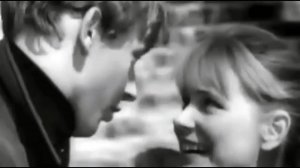
 9:37
9:37
2024-01-18 01:17

 0:36
0:36

 0:36
0:36
2025-01-07 15:47

 0:41
0:41

 0:41
0:41
2023-12-18 23:00
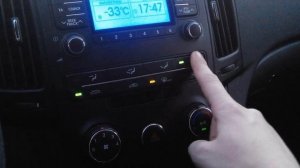
 0:37
0:37

 0:37
0:37
2024-01-25 05:41

 1:00:12
1:00:12

 1:00:12
1:00:12
2024-04-25 15:30
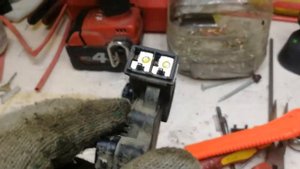
 12:10
12:10

 12:10
12:10
2023-12-20 22:25
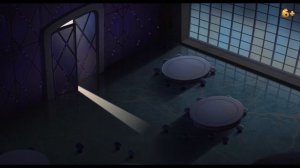
 1:46
1:46

 1:46
1:46
2024-12-12 15:32

 5:22
5:22

 5:22
5:22
2025-06-03 13:00
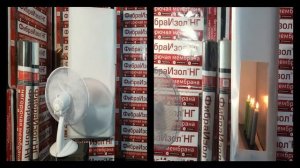
 0:50
0:50

 0:50
0:50
2024-01-14 00:21

 4:25
4:25

 4:25
4:25
2023-12-07 11:45
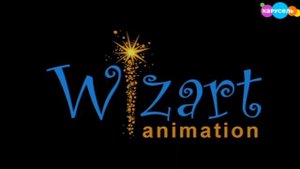
 0:31
0:31

 0:31
0:31
2025-05-28 13:54

 56:00
56:00

 56:00
56:00
2023-09-28 12:15

 3:57
3:57

 3:57
3:57
2023-06-30 13:14
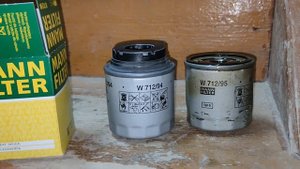
 8:30
8:30

 8:30
8:30
2023-11-18 14:27
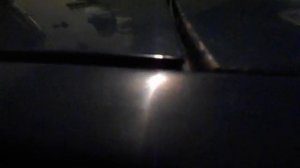
 3:20
3:20

 3:20
3:20
2023-09-05 15:34

 29:51
29:51

 29:51
29:51
2023-08-14 18:23
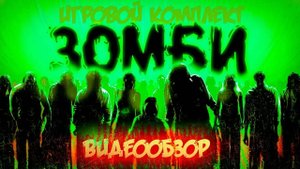
 5:21
5:21

 5:21
5:21
2025-02-18 17:15
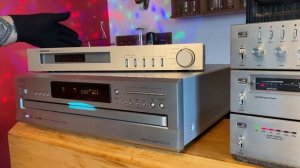
 2:18
2:18
![Zhamil Turan - Губки не целованы (Премьера клипа 2025)]() 2:37
2:37
![Enrasta - Франция (Премьера клипа 2025)]() 2:44
2:44
![Зара - Пилоты (Премьера клипа 2025)]() 3:51
3:51
![Бекзод Хаккиев - Нолалар (Премьера клипа 2025)]() 4:07
4:07
![Маракеш, Сергей Наговицын - До свидания, кореша (Премьера клипа 2025)]() 3:20
3:20
![Абрикоса, GOSHU - Удали из памяти (Премьера клипа 2025)]() 4:59
4:59
![Катя Маркеданец - Мама (Премьера клипа 2025)]() 3:32
3:32
![Ахрор Гуломов - Ёмгирлар (Премьера клипа 2025)]() 3:49
3:49
![Ислам Итляшев - Не реви (Премьера клипа 2025)]() 2:41
2:41
![ARTIX - На небе луна (Премьера клипа 2025)]() 2:59
2:59
![Рустам Нахушев - Письмо (Лезгинка) Премьера клипа 2025]() 3:27
3:27
![NAIMAN - Плакала (Премьера клипа 2025)]() 2:21
2:21
![Tural Everest, Руслан Добрый - Красивая (Премьера клипа 2025)]() 3:16
3:16
![Алмас Багратиони - Дети света (Премьера клипа 2025)]() 2:52
2:52
![UMARO - 1-2-3 (Премьера клипа 2025)]() 2:52
2:52
![Сирожиддин Шарипов - Хазонлар (Премьера клипа 2025)]() 3:09
3:09
![Маша Шейх - Будь человеком (Премьера клипа 2025)]() 2:41
2:41
![АКУЛИЧ - Красные глаза (Премьера клипа 2025)]() 2:13
2:13
![Леся Кир - Альфонс (Премьера клипа 2025)]() 3:23
3:23
![KLEO - Люли (Премьера клипа 2025)]() 2:32
2:32
![Протокол выхода | Exit Protocol (2025)]() 1:24:45
1:24:45
![Бешеные псы | Reservoir Dogs (1991) (Гоблин)]() 1:39:10
1:39:10
![Стив | Steve (2025)]() 1:33:34
1:33:34
![Вальсируя с Брандо | Waltzing with Brando (2024)]() 1:44:15
1:44:15
![От заката до рассвета | From Dusk Till Dawn (1995) (Гоблин)]() 1:47:54
1:47:54
![Фантастическая четвёрка: Первые шаги | The Fantastic Four: First Steps (2025)]() 1:54:40
1:54:40
![Цельнометаллическая оболочка | Full Metal Jacket (1987) (Гоблин)]() 1:56:34
1:56:34
![Франкенштейн | Frankenstein (2025)]() 2:32:29
2:32:29
![Большой куш / Спи#дили | Snatch (2000) (Гоблин)]() 1:42:50
1:42:50
![Пойман с поличным | Caught Stealing (2025)]() 1:46:45
1:46:45
![Французский любовник | French Lover (2025)]() 2:02:20
2:02:20
![Безжалостная | Stone Cold Fox (2025)]() 1:25:31
1:25:31
![Свайпнуть | Swiped (2025)]() 1:50:35
1:50:35
![Рок-н-рольщик | RocknRolla (2008) (Гоблин)]() 1:54:23
1:54:23
![Диспетчер | Relay (2025)]() 1:51:56
1:51:56
![Кровавый четверг | Thursday (1998) (Гоблин)]() 1:27:51
1:27:51
![Богомол | Samagwi (2025)]() 1:53:29
1:53:29
![Супруги Роуз | The Roses (2025)]() 1:45:29
1:45:29
![Плохой Санта 2 | Bad Santa 2 (2016) (Гоблин)]() 1:34:55
1:34:55
![Терминатор 2: Судный день | Terminator 2: Judgment Day (1991) (Гоблин)]() 2:36:13
2:36:13
![Команда Дино. Исследователи Сезон 1]() 13:10
13:10
![Истории Баданаму Сезон 1]() 10:02
10:02
![Хвостатые песенки]() 7:00
7:00
![Тодли Великолепный!]() 3:15
3:15
![Оранжевая корова]() 6:30
6:30
![Корги по имени Моко. Новый питомец]() 3:28
3:28
![Врумиз. 1 сезон]() 13:10
13:10
![Роботы-пожарные]() 12:31
12:31
![Команда Дино Сезон 1]() 12:08
12:08
![Школьный автобус Гордон]() 12:34
12:34
![Шахерезада. Нерассказанные истории Сезон 1]() 23:53
23:53
![Новое ПРОСТОКВАШИНО]() 6:30
6:30
![Полли Покет Сезон 1]() 21:30
21:30
![Крутиксы]() 11:00
11:00
![Корги по имени Моко. Защитники планеты]() 4:33
4:33
![Панда и петушок Лука]() 12:12
12:12
![Пип и Альба. Приключения в Соленой Бухте! Сезон 1]() 11:02
11:02
![Пингвиненок Пороро]() 7:42
7:42
![Тайны Медовой долины]() 7:01
7:01
![МиниФорс Сезон 1]() 13:12
13:12

 2:18
2:18Скачать Видео с Рутуба / RuTube
| 256x144 | ||
| 640x360 |
 2:37
2:37
2025-11-13 11:00
 2:44
2:44
2025-11-20 21:37
 3:51
3:51
2025-11-11 12:22
 4:07
4:07
2025-11-11 17:31
 3:20
3:20
2025-11-11 00:28
 4:59
4:59
2025-11-15 12:21
 3:32
3:32
2025-11-17 14:20
 3:49
3:49
2025-11-15 12:54
 2:41
2:41
2025-11-18 12:35
 2:59
2:59
2025-11-18 12:12
 3:27
3:27
2025-11-12 14:36
 2:21
2:21
2025-11-18 12:25
 3:16
3:16
2025-11-12 12:12
 2:52
2:52
2025-11-20 13:43
 2:52
2:52
2025-11-14 12:21
 3:09
3:09
2025-11-09 16:47
 2:41
2:41
2025-11-12 12:48
 2:13
2:13
2025-11-15 12:35
 3:23
3:23
2025-11-19 11:51
 2:32
2:32
2025-11-11 12:30
0/0
 1:24:45
1:24:45
2025-11-13 23:26
 1:39:10
1:39:10
2025-09-23 22:53
 1:33:34
1:33:34
2025-10-08 12:27
 1:44:15
1:44:15
2025-11-07 20:19
 1:47:54
1:47:54
2025-09-23 22:53
 1:54:40
1:54:40
2025-09-24 11:35
 1:56:34
1:56:34
2025-09-23 22:53
 2:32:29
2:32:29
2025-11-17 11:22
 1:42:50
1:42:50
2025-09-23 22:53
 1:46:45
1:46:45
2025-10-02 20:45
 2:02:20
2:02:20
2025-10-01 12:06
 1:25:31
1:25:31
2025-11-10 21:11
 1:50:35
1:50:35
2025-09-24 10:48
 1:54:23
1:54:23
2025-09-23 22:53
 1:51:56
1:51:56
2025-09-24 11:35
 1:27:51
1:27:51
2025-09-23 22:52
 1:53:29
1:53:29
2025-10-01 12:06
 1:45:29
1:45:29
2025-10-23 18:26
 1:34:55
1:34:55
2025-09-23 22:53
 2:36:13
2:36:13
2025-10-07 09:27
0/0
2021-09-22 22:45
2021-09-22 21:29
 7:00
7:00
2025-06-01 11:15
 3:15
3:15
2025-06-10 13:56
 6:30
6:30
2022-03-31 18:49
 3:28
3:28
2025-01-09 17:01
2021-09-24 16:00
2021-09-23 00:12
2021-09-22 22:29
 12:34
12:34
2024-12-02 14:42
2021-09-22 23:25
 6:30
6:30
2018-04-03 10:35
2021-09-22 23:09
 11:00
11:00
2022-07-25 18:59
 4:33
4:33
2024-12-17 16:56
 12:12
12:12
2024-11-29 14:21
2021-09-22 23:36
 7:42
7:42
2024-12-17 12:21
 7:01
7:01
2022-03-30 17:25
2021-09-23 00:15
0/0

